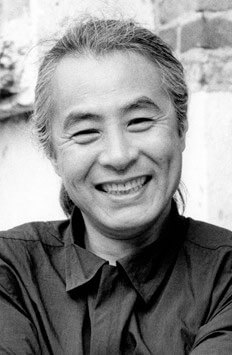Tahara was born in Kyoto. He learned photographic techniques at an early age from his grandfather, a professional photographer.
In 1972, he travelled Europe with Red Buddha Theatre as a lighting and visual technician. While in France, he encountered a sharp, harsh and piercing light that he had never experienced in Japan. Since then, he remained in Paris for next 30 years and started his career as a photographer.
His first series of work "Ville (City)" (1973-1976) captured the unique light in Paris in black-and-white photography. His next series of work "Fenêtre (Windows)" (1973-1980) awarded the best new photographer by Arles International Photography Festival in 1977 and he moved into the limelight.The following year, he started the new series "Portrait" (1978), then "Eclat" (1979-1983) and "Polaroid" (1984) and received number of awards such as Ihei Kimura award (1985).
His morphological approach to light has extended to sculpture, installations, and other various method crossing over the genre of photography. In 1993, in moat of the Castle of Angers (1993), the first light sculpture in France, "Fighting the Dragon" (1993) was installed.
"Garden of Light" (Eniwa, Hokkaido, 1989) is a representative piece in which light sculptures are installed in a public space covered in snow for six months of the year. The light changes in response to music and presents a space of poetic dimensions. Based on the same concept, "Échos du Lumières" (2000) was installed in the Canal Saint-Martin, commissioned as a public space project by the City of Paris. The spectacle colors from the prisms illuminate the stone wall synchronizing with the sounds.
The rest of his work include a permanent outdoor installation "Niwa (Garden)" (2001) at the Photography Museum in Paris (Maison Européenne de la Photographie), "Portail de Lumière", an installation created as a part of the cultural project Lille 2004, and " Light Sculpture" exhibition at Tokyo Metropolitan Teien Art Museum in 2004.
In 2008, Tahara lead the project of building Ginza 888, with the artistic direction of the Museum of Islamic Art. A photography book was published.
He continued to produce a number of light installation projects in urban spaces. He died on 6 June 2017.
Source: Wikipedia
When did you realize you wanted to be a photographer?
It was 1972 when I am 21 years old
Where did you study photography? With whom?
From my grand father
Do you have a mentor or role model?
Trace of light. Moholy-Nagy / Man-Ray
How long have you been a photographer?
40 years
Do you remember your first shot? What was it?
Yes, when I was 6 years old took the picture of garden of our family house
What or who inspires you?
So many artists which I met in my life
How could you describe your style?
Trace of light.
Do you have a favorite photograph or series?
Serie de Eclat 1979-1983
Do you spend a lot of time editing your images? For what purpose?
Light/Observation/Notation
what mistake should a young photographer avoid?
Do not afraid mistake, mistake make a art
An idea, a sentence, a project you would like to share?
1970
What are your projects?
1970
